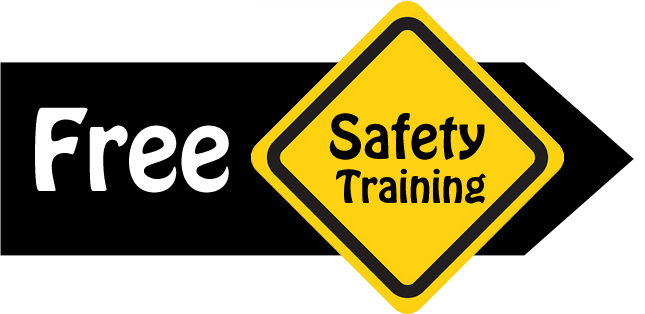
Heart Disease and the Workplace: Important Things to Know
Health and safety in the workplace are often defined in terms of safety procedures, equipment use, hazardous chemicals, and the like. We do not talk as much about things such as coronary heart disease and its broader companion, cardiovascular disease. Yet addressing both types of diseases is an integral part of health and safety in the workplace.
Cardiovascular disease is a category of diseases that encompasses both the heart and circulatory system. Coronary heart disease is more specified in that it relates specifically to the heart muscle. Hundreds of thousands of people die of coronary heart disease every year. They die from:
- heart failure
- valve disease
- cardiac arrhythmia
- cardiomyopathy
- congenital heart disease
- hypertension complications.
What does this have to do with the workplace? A lot. People with known heart problems are at greater risk of certain kinds of cardiac events. Multiple factors within the workplace can contribute to that risk. As such, both employees and employers should be familiar with the basic principles of coronary heart disease and how such diseases impact a person’s ability to work.
Influencing Factors at Work
The UK Government’s Fit for Work initiative has identified four workplace factors that can increase the risks faced by employees with heart problems. The first is toxic substances. Fit for Work specifically mentions methylene chloride as an example. Methylene chloride is an ingredient found in paint removers, among other products.
Other workplace toxins mentioned by the initiative include carbon monoxide and carbon disulphide. There are others as well. The point is that there are plenty of different substances found in the modern workplace that can exacerbate heart disease. This is why it is so important for patients to discuss their work environments with their physicians.
Next up are physical hazards. These include things like drastic temperature changes. People suffering from coronary heart disease may be at greater risk when working in extreme heat or cold. Spending all day in a foundry, for example, could be problematic. Likewise, working in a freezer all day can exacerbate heart issues.
The final two factors are sedentary work and a psychologically unhealthy environment. The former should be obvious. A lack of exercise is unhealthy for all of us, but especially for those suffering from coronary heart disease. As for a psychologically unhealthy environment, anything that causes undue stress or anxiety among workers can exacerbate existing heart disease.
First-Aid Training
Knowing the extent to which modern society suffers from coronary heart disease, it makes sense for workplaces to encourage first-aid training among all employees. Basic training that includes CPR and recognition of the symptoms of heart attack and cardiac arrest go a long way toward helping employees with heart disease.
First-aid training is easily obtained through the Red Cross and a multitude of other charities and for-profit training organisations. An added benefit of such training is that it covers far more than just CPR. First-aid training can prove itself quite valuable in the workplace.
AEDs in the Workplace
Above and beyond first-aid training, employers can make the workplace safer by installing automated external defibrillators (AEDs). These handy little devices make a critical difference during a cardiac arrest incident. When combined with CPR, AEDs can keep cardiac arrest patients alive while waiting for emergency medical services to arrive on the scene.
Employers can look for defibrillators to buy online. They are fairly affordable, so it might be a good idea to purchase a few so that every area of a commercial building is covered. In terms of deployment, AEDs are rather simple technology from the user’s standpoint.
An AED comes with written instructions that are often accompanied by diagrams. A user opens the package, attaches several electrodes, and turns the machine on. The AED does the rest. It monitors the patient’s heartbeat and, if necessary, delivers controlled electric shocks to help restore natural rhythm.
Working with Employees
In closing, Fit for Work encourages employers to work with employees who have been diagnosed with coronary heart disease. The idea is to find a way to accommodate such employees so that they can continue working safely. There is no point in preventing someone who can still work from doing so if accommodations can be made.
The initiative recognises that sometimes accommodating employees means reassigning them in order to avoid exposure to toxic substances, stress, and other factors. It is also a fact of life that some people diagnosed with coronary heart disease must stop working altogether. But where employers and doctors can work together to keep someone on the job, doing so is the best course of action.
In the larger discussion of workplace health and safety, let us not forget the very real threat of coronary heart disease. It is as much a health and safety concern as anything else in the workplace. The more people know about it, the more we can all do to prevent exposing workers with coronary heart disease to unnecessary risks.
The fun way to reduce chances of heart attack
Studies suggest that satisfying sexual pleasure reduces the chances if heart attack in women. Either you’re couple or single playing with pleasure toys is the once of the best ways to gain peak of sexual pleasure. You should try once the Lovense Lush 2 this is one of the best love toy for women, you should read it’s reviews at lustoy.in – All you need to know about Lovense Lush 2.




Brianpoive
March 25, 2020I like looking through your site. Appreciate it!